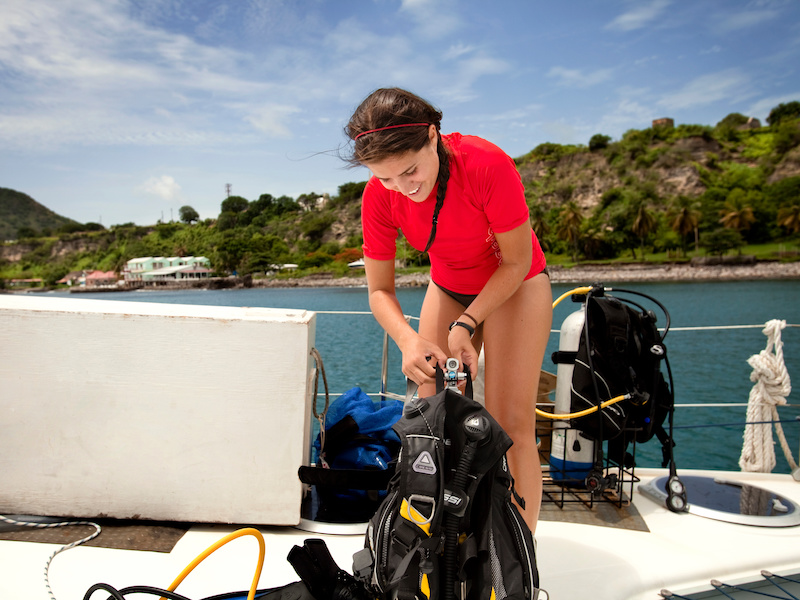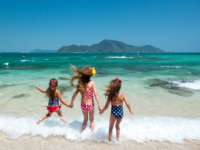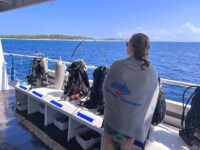Going on a scuba diving liveaboard is an exciting way to spend a vacation. Living on a boat, diving multiple times a day, and enjoying the company of fellow divers is a fun and relaxing way to explore the underwater world.
If you’re going on a scuba diving liveaboard, you may be wondering what you need to pack. It’s not as easy as throwing a few bathing suits in your suitcase and getting on the plane. Packing for a scuba diving liveaboard requires some planning.
One thing to remember if you’re going on your first scuba diving liveaboard is that you don’t have to bring all of your own gear. You’ll be able to rent a BCD, fins, a regulator, etc., from the dive boat for an extra cost. If you are planning to go on multiple liveaboard trips, it probably makes sense to own those things, but if you’re just trying out a liveaboard for the first time and aren’t quite sure if you want to own bulky and expensive gear, it’s totally okay to rent it (that’s what I did).
Legal Stuff: This post may contain affiliate links and/or credit card referral links. We participate in the Amazon Services LLC Associates Program, an affiliate advertising program designed to provide a means for us to earn fees by linking to Amazon.com and affiliated sites.
Scuba Diving Liveaboard Packing List
Here are the essentials you’ll need for a scuba diving liveaboard trip:
Wetsuit: Even if the water temperature is warm at your dive location, you’ll want a wetsuit or some type of rashguard to dive in. I used this 3mm full wetsuit and was very comfortable on all of my dives. Others opted for swim leggings and rashguards or shark skins and shorts. There’s a bit of personal preference here, but you’ll definitely want something more than just a bathing suit.
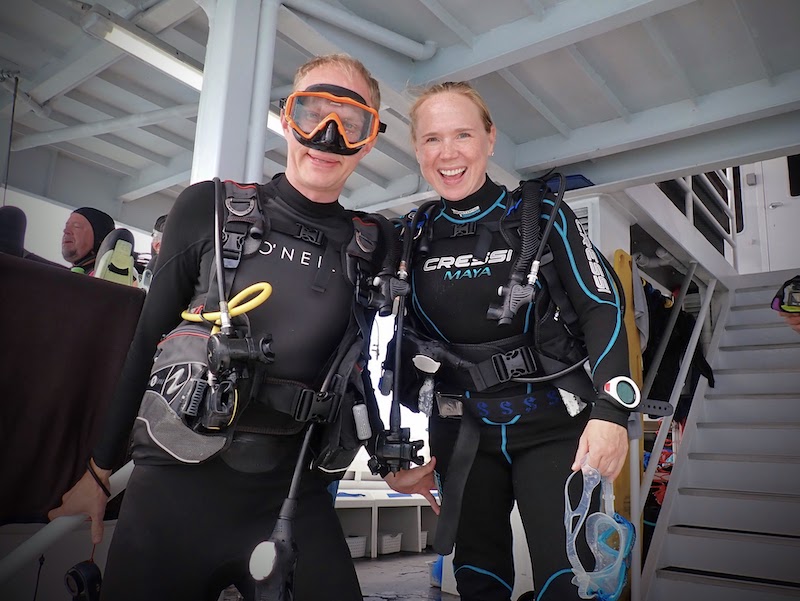
Multiple bathing suits: You’ll want to change out of your wet bathing suit to eat lunch and dinner, and trust me, you’ll be much happier putting a dry one back on. Bring at least 3 bathing suits to make sure you’ve always got a dry one available.
Best Card for Everyday Purchases: Earn 2 points per $1 on ALL purchases with the Capital One Venture X Rewards Credit Card
Mask: Even if you’re a very infrequent scuba diver, a mask is just something you’ll want to own. A good mask that fits you properly is essential to a good dive, and you don’t want to leave that up to chance. I’ve used this Cressi LINCE mask for years, and it’s been great.
Rash guards: Even if you’re diving in a wetsuit, it’s a good idea to have some rash guards, too. They offer additional warmth and the benefit of sun protection between dives. I brought 2 that I could wear under my wetsuit and a hooded one that I wore between dives. Honestly, I wish I had brought another one, so I would suggest 4 rashguards for a week-long scuba diving liveaboard trip.
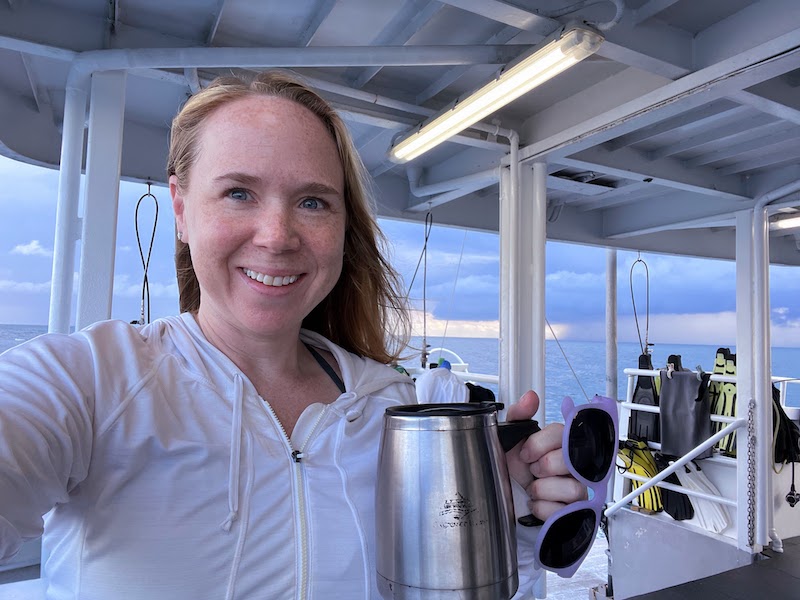
Scuba socks: Scuba socks are one of the most important things you should bring on your first scuba liveaboard. Your feet will get torn up getting in and out of fins so many times a day. I wore these scuba socks that also offered additional warmth and they were perfect.
Dive Computer: The crew on my scuba liveaboard required everyone to have their own dive computer. My husband and I usually share, so we only have one. Thankfully, they were able to lend us an additional computer to use during the week.
Underwater Camera: Having an underwater camera allows you to capture what it’s like during your aquatic adventures. I used this camera during our trip and it worked really well, but I was really impressed with the Sea Life smartphone underwater casing that some of the other divers had. I ended up buying one as soon as I got home.
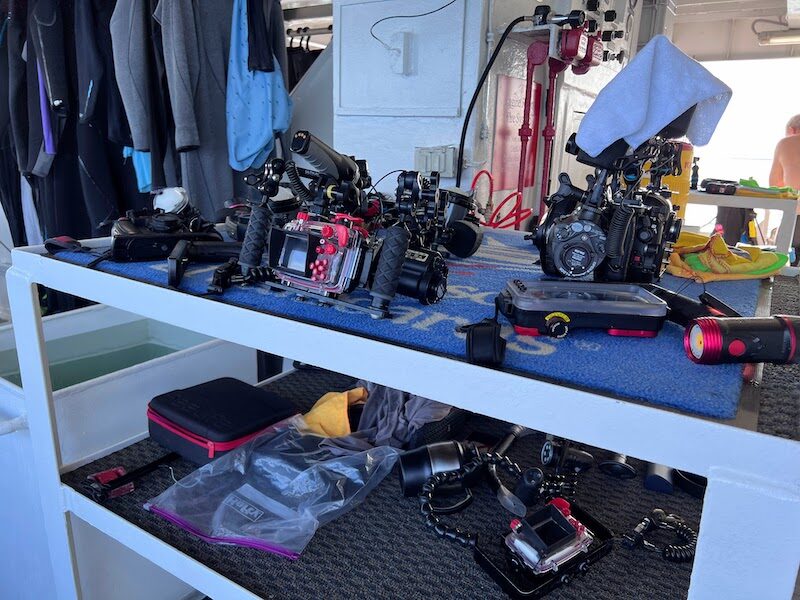
Underwater flashlight: I did not think to bring an underwater flashlight on my liveaboard trip, despite knowing there were night dives. The thought never occurred to me. My husband used our camera light, and I was able to borrow an extra flashlight from another diver, so it worked out. I discovered it’s actually helpful to have a flashlight on day dives, too — it helps you see what’s in those underwater hidey holes!
Ear drops: Ear drops are essential on a scuba diving liveaboard trip — even if you have never needed them before. You can buy some (and this may be a good idea to get the ear dropper bottle), but the recommended thing onboard was making your own solution of 50% alcohol and 50% vinegar. This mixture works great to dry out your ears after each dive.
Clothes hanger clips: I saw many of the seasoned liveaboard guests use these towel clips to hang their clothes on the railings to dry without getting blown away. Simple yet very effective!
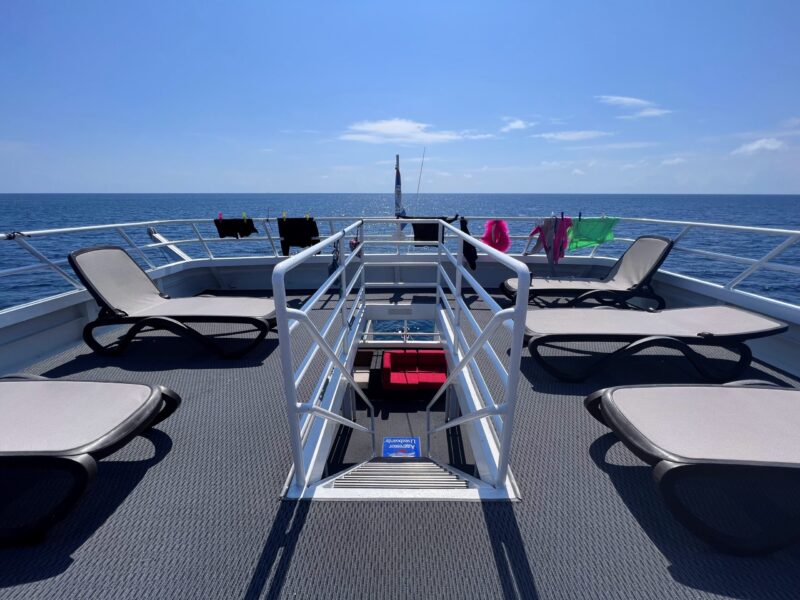
Conditioner: If you have long hair, bring plenty of conditioner to help work out tangles after dives. Even better, bring some spray leave-in conditioner that you can apply immediately after diving. There are hot water showers on the dive deck, so you can rinse off and apply conditioner if needed.
Hoody, sweatshirt, light jacket: Since most scuba liveaboard trips are to warm weather destinations, you might not think to bring any cool weather clothes. However, the dining room can be chilly, and it can get breezy and cool in the evenings, so make sure you pack a hoody, cozy sweatshirt, or a light jacket (or 2).
Shoes that can get wet: If you wear shoes on the dive deck, they will get wet, so be sure your footwear can handle water. I wore these Birkenstock EVA sandals and they were perfect.
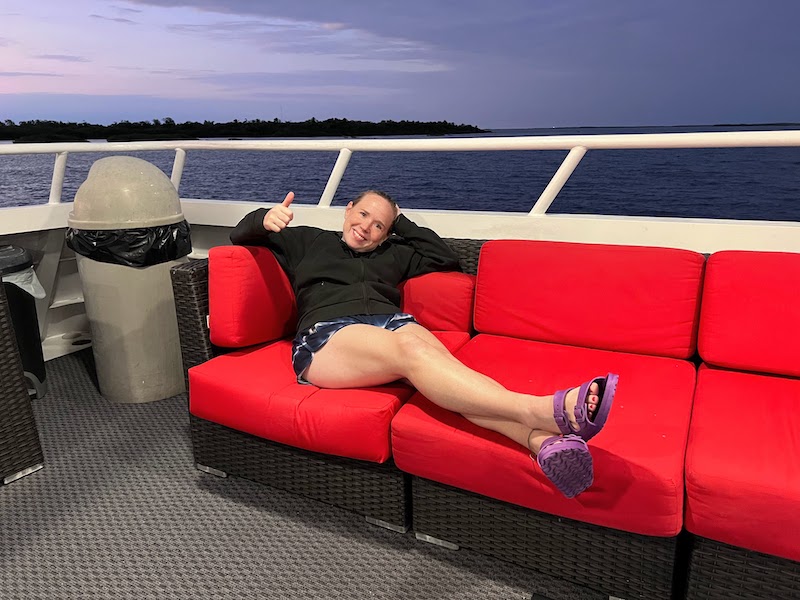
Scuba hood: A scuba hood isn’t essential, but it’s nice to have. I didn’t have one, and I wished I had known how useful they were so I could have brought one. A scuba hood helps keep you warm and can help protect your ears a bit (as well as providing a comforting feeling on night dives when you can see all of the “stuff” that floats in the water). Some of the divers on my trip had really fun hoods, too with mohawks and devil horns.
Cover-up: You’ll want to bring clothes or a cover-up you can throw over your wet bathing suit. I bought 2 Rip Skirts, and they were great — quick drying and easy to take on and off. There was actually another diver on the trip who had the same pattern I had so we were twinning in our RipSkirts.
These skirts are awesome and I always bring them anytime I am going scuba diving or going on a beach vacation.
Clothes to wear during meals: The boat is super casual, and you don’t need to dress up for meals at all. You can even wear a bathing suit and cover-up as long as it’s dry. So make sure you have plenty of cover-ups and casual outfits to throw on between dives for lunch and dinner.
Sunscreen: I didn’t use as much sunscreen as I was expecting since I was wearing a rash guard so much, but it’s a good idea to bring some. If you forget, there will probably be some on the boat. Make sure whatever you’re bringing is reef-safe. Many places in the world, including popular diving sites, have banned certain sunscreens that aren’t reef-safe.
For my face, I use Josie Maran Get Even Sunmilk SPF 33, and I tend to go with Blue Lizard sunscreen for my body.
Read More: 7-night liveaboard trip on the Belize Aggressor IV.
Hanging toiletry bag: The bathrooms on a liveaboard are tiny with very little counter space. If you bring a hanging toiletry bag, you’ll have easier access to everything you need, and you’ll be able to stay much more organized. This is the exact toiletry bag I bring on every single trip I take, and it’s so convenient.
Plastic garbage bags for packing: Bring a large plastic bag of some sort so you can pack any items that are still wet without ending up with a suitcase full of damp clothes.
Scuba dive insurance info: I usually don’t purchase travel insurance, but a scuba diving liveaboard is one type of trip where insurance is a good idea. Be sure to bring your policy information in case you need it.
Final Thoughts
Packing for your first scuba diving liveaboard trip can be a little tricky if you don’t know what to expect. That’s why I wrote this scuba diving liveaboard packing list — so you won’t forget any essentials!
Happy diving!
Featured Image Credit: Cavan for Adobe

